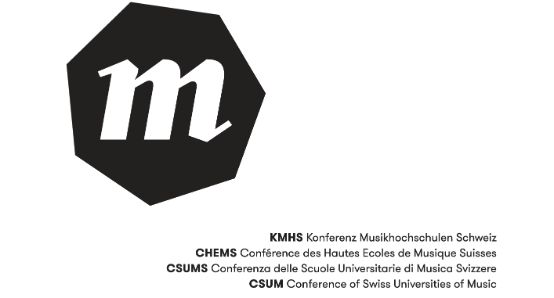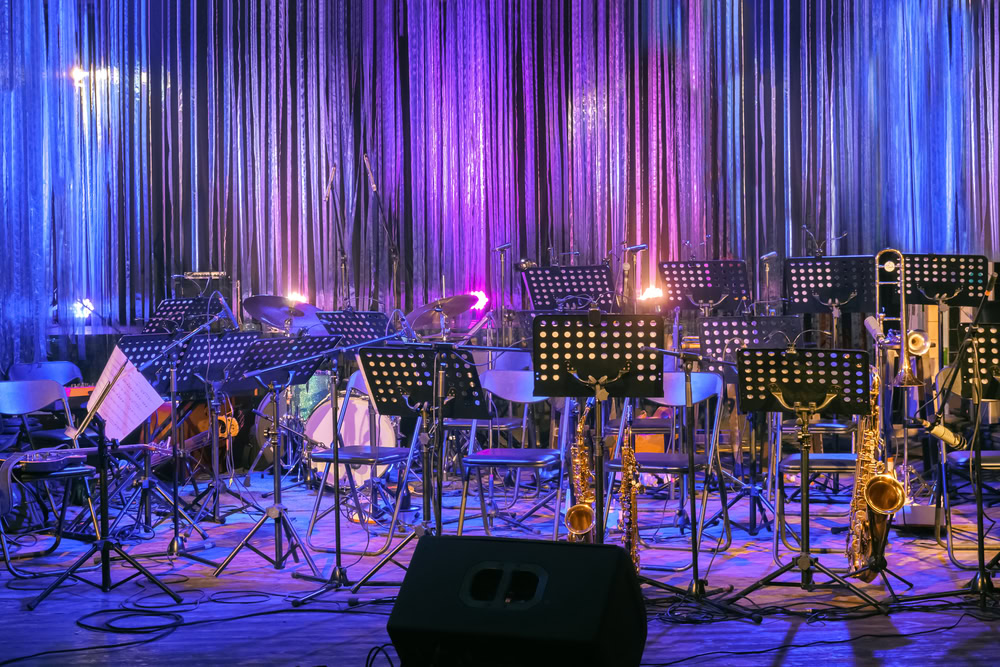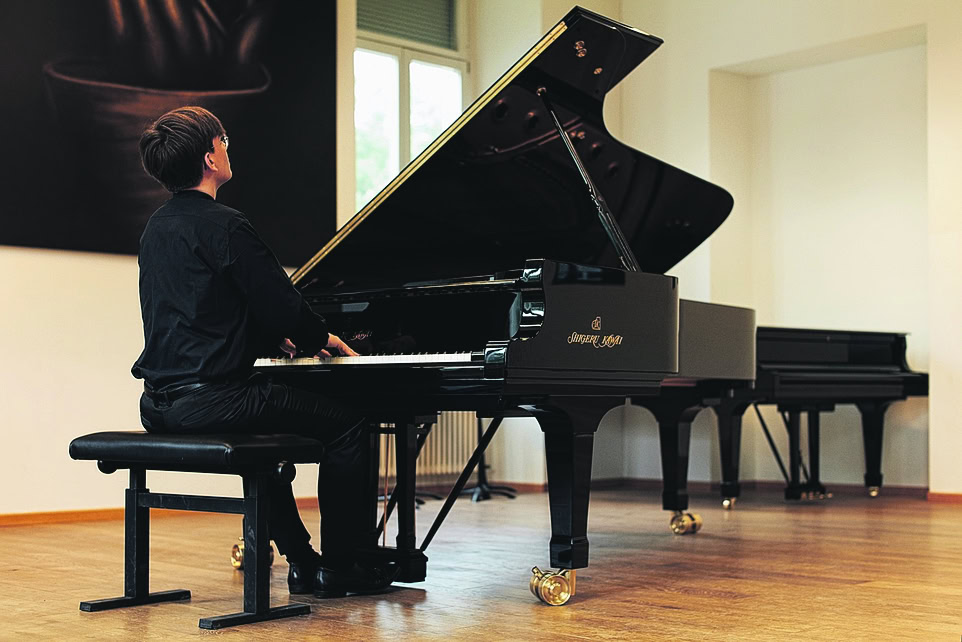Still a long way from getting old
Writing about music has a long tradition in Western culture. Research projects at the Lucerne School of Music draw attention to almost 100 years of music criticism of sound recordings.

Elena Alessandri, Antonio Baldassarre - Writing about music has a long tradition in Western culture. More than two thousand years ago, Plato was already reflecting on the ethical dimensions of music and its political consequences. In the course of the long history of writing about music, a professionalization of the critical examination of musical artefacts developed apart from philosophical or theological reflection, which from the 18th century onwards established itself as an independent form of discourse on music and, from the 19th century onwards, also as an effective form of reflective discourse on music. While music criticism initially took place in specialist musical journals, such as the "Allgemeine musikalische Zeitung" founded by Friedrich Rochlitz and Gottfried Christoph Härtel in Leipzig in 1798, it increasingly shifted to the feature pages of the daily press during the 19th century, as exemplified by the career of Eduard Hanslick, who is still considered the epitome of professionalized music criticism today: His reviews even appeared largely on the front page of the Viennese "Neue Freie Presse" from 1864 onwards; a clear indication of the power of musical criticism in the 19th century.
Due to the reproducibility of art - to which Walter Benjamin famously dedicated an epochal essay in his essay "The Work of Art in the Age of Reproducibility" (1936) - music criticism in the 20th century turned to sound recordings in addition to the original criticism of works and performances. Over the last 100 years, this has given rise to an independent tradition of reflection whose main focus is on the actual sound experience, detached from conventional performance contexts. This unique corpus of sources provides novel information about how experienced listeners perceive, conceptualize, describe and ultimately evaluate music. This brings to the fore questions of how reviews of sound recordings are structured in terms of content and language, such as: What is actually being reported on? What evaluation criteria are cited? How is it justified that one recording is better than another? And what role does music criticism actually play in the context of today's digital classical music market? The Competence Center Music Performance Research at the Lucerne School of Music (HSLU M) has been working intensively on these and other questions over the past 10 years. In collaboration with the Conservatorio della Svizzera italiana, the Swiss National Science Foundation (SNSF)-funded project Reviews Reviewed realized. The findings formed the basis for the dissertation "Evaluating Recorded Performance" (Elena Alessandri, 2014), which was also written at HSLU M and accepted by the Royal College of Music in London. This was followed by a second SNSF-funded project Review Impact (2016-2020), in which the findings from the dissertation were analyzed in the context of the music market.
The core of the projects involved analyzing the content of a corpus of over 900 reviews of recordings of piano music from the classical repertoire that were published in Switzerland, Germany and England between 1923 and 2018. The analysis of over 450,000 words of text sources shows just how diverse and nuanced the musical criticism of sound recordings is.
Due to the nature of the subject matter, the performance is given the most weight in terms of content. However, many other aspects, such as the performers, the recorded work, the instrument or the recording, production and marketing conditions are also discussed. On a descriptive level, it can be seen that in addition to technical musical parameters such as rhythm, agogics, dynamics or phrasing, for which there seems to be an established terminology, critics tend to resort to metaphors and comparisons when writing about more general musical aspects such as style, character and structure. A total of 42 themes were identified for the description of sound recordings. Some of these topics gain or lose weight over time, e.g. aspects for the description of technical recording and production processes reached a peak in the 1950s to 1970s, while they lost importance from the 1990s onwards.
In contrast to the great diversity of topics, as the recording is described, there is a certain stability with regard to the assessment criteria. Over the almost 100-year corpus of texts, seven assessment criteria prove to be extremely durable: three criteria for aesthetic evaluation (intensity, coherence, complexity), three criteria for assessing the interpreter's performance (confidence, understanding, effort) and one criterion that takes into account the dependence of the recording on the context. What is striking in this context, however, is that when describing or assessing an interpretation, the purely technical-musical parameters are often embedded in statements about the person behind the performance or are expanded to include this dimension. In other words, the technical statement "the tempo is increased" is transformed into "the pianist takes a risk by increasing the tempo, but manages it with confidence". In this way, the performance is described or judged on the basis of assumptions about what the pianist has thought, intended or dared to do, and the three performance-focused criteria mentioned above, namely security, understanding and effort, are integrated into the aesthetic judgment as supporting pillars. With such an attitude, the critics acknowledge the special significance that human performance has for the perception and recognition of the performance. This at least seems to put into perspective the widespread fear among musicians that musical performance will one day be replaced by learning machines and algorithms.
The text analysis also documents that the seven assessment criteria are not treated as a checklist by the critics. It is not expected that a performance fulfills all criteria, and critics do not evaluate the performance according to the principle of "the more the better". Rather, they appreciate the fact that a performance is the product of a combination of different characteristics. As with a delicious meal, the weighting and dosage of and balance between the individual ingredients, such as complexity and coherence; security and understanding, are relevant to a musically valuable recording. This insight is also relevant for the university context, as there is often a tendency in examination situations to work through a given catalog of supposedly neutral criteria individually and separately from top to bottom, instead of weighting the relationships and dependencies of the criteria of the current interpretation accordingly.
The results obtained from the text analysis were also incorporated and confirmed in interviews with professional critics from Switzerland, Germany and the UK. In these interviews, the role of music criticism of classical music recordings, its function and significance were also discussed. In terms of profile, critics continue to see themselves as responsible and committed mediators between producers, artists and consumers, despite increasingly precarious working conditions: Principles such as integrity, respect and clarity play an important role in their work. In a music market that is almost entirely digital and characterized by lay judgments, the experts do not see their function in making purchase recommendations, but rather in providing guidance and orientation for listening. In this context, it is emphasized that a clear and comprehensible judgment is a high priority. However, the conditions of today's music market are causing critics to have serious doubts about the importance of their work: This concern is reflected in the question often raised in the interviews as to whether professional music criticism is still relevant today.
Based on this doubt, an online survey was launched among classical music listeners. 1,200 people from 62 countries took part in this survey. Interestingly, contrary to the stereotypical expectation fueled by critics' doubts, around two thirds of participants stated that they read or listen to music reviews of recordings. 80% of participants expect music criticism to be constructive, respectful and objective. In line with the critics, music listeners also expect a differentiated and well-founded value judgment that can serve as a guide for their listening. However, the profile of the authorship (professional vs. amateur) is considered to be of secondary importance: consumers place the main focus on the quality of the text and not on whether the authors have professional training or not.
However, this assessment of the survey was not confirmed in an online experiment. Respondents from two groups were confronted with the same anonymized professional music review: Group 1 was told that the text was penned by a professional writer, while Group 2 was told that the text was written by an amateur with music knowledge. Interestingly, Group 1 rated the lyrics as slightly more useful and trustworthy. However, knowing whether a text was written by an expert or an amateur had no influence on the purchasing behavior or the willingness of the test subjects to purchase the reviewed audio recording, as this was only dependent on how positive the review was.
To summarize: The studies conducted over the last 10 years at the CC Music Performance Research of the HSLU M prove that music criticism provides important insights into how music is perceived, described and evaluated beyond the purpose of criticism. This form of writing is extremely complex and nuanced and is strongly characterized by rhetorical devices. The function and significance of professional music criticism are increasingly seen as problematic by the performing arts. However, the results show that music criticism plays an important role in mediating between stakeholders and in orienting and guiding music listening.
In a competitive music market that is increasingly judging music with purely quantitative values and is driven by quick decisions (rankings, sales quotas, likes, stars, ratings, etc.), music critics invite us to engage with the qualitative characteristics of music and its realization. And this is precisely why music critics also have a responsible role to play in the digital music market. Their value judgments are still in demand and welcome because they remind us that listening to and critically engaging with music is not only an entertaining journey, but also an enriching adventure.
Dr. Elena Alessandri
... is Head of the Competence Center Music Performance Research at the Lucerne School of Music.
Prof. Dr. Antonio Baldassarre .
... is Vice-Director and Head of Research & Development at the Lucerne School of Music.
> www.hslu.ch/reviewimpact








